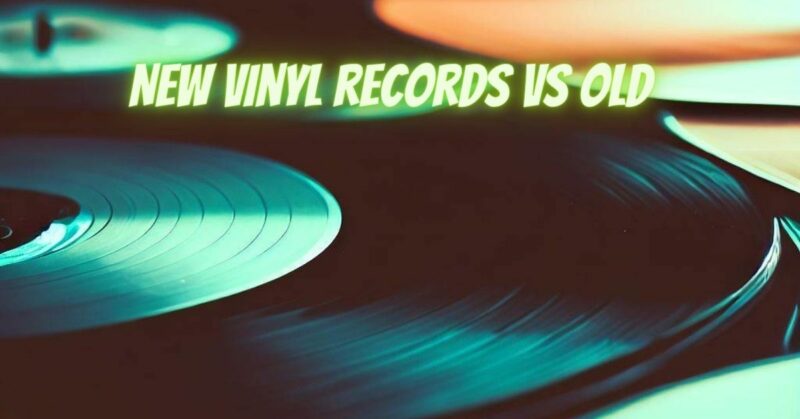Vinyl records have stood the test of time as a classic medium for music playback, captivating generations with their warm analog sound and unique physicality. Over the years, the vinyl market has witnessed significant changes, both in terms of manufacturing techniques and the quality of records produced. The debate between new vinyl records and old ones, often referred to as “vintage” or “original pressings,” is a nuanced discussion that delves into aspects such as sound quality, manufacturing processes, collectibility, and personal preferences.
Manufacturing Techniques and Sound Quality: One of the fundamental distinctions between new and old vinyl records lies in the manufacturing techniques employed. Early vinyl records were created using analog processes, where sound waves were directly engraved onto lacquer-coated master discs, and subsequently, metal stampers were used to press records. This method, while retaining a certain charm and warmth, could also introduce imperfections and limitations in terms of fidelity.
Modern vinyl records, on the other hand, benefit from advancements in manufacturing technologies. New records are often produced using high-resolution digital audio sources, allowing for greater precision and accuracy during the cutting process. The result is improved clarity and reduced surface noise, contributing to a more faithful representation of the original recording. However, some audiophiles argue that the digital step in the process can potentially diminish the organic warmth associated with analog recordings.
Sound Character: The sound character of new and old vinyl records can vary significantly. Old records, especially vintage pressings from the 1950s to the 1970s, can exhibit a particular tonal quality and character that appeals to collectors and enthusiasts. The limitations of the recording equipment and manufacturing processes of that era contribute to a distinct sonic signature that many listeners find alluring. The warm, slightly compressed sound with subtle imperfections can evoke a sense of nostalgia and authenticity.
On the other hand, new vinyl records, with their modern mastering and pressing techniques, often offer a cleaner, more precise sound. This can be advantageous for audiophiles seeking a more accurate representation of the original recording, especially for genres that rely heavily on intricate details and dynamic range.
Collectibility and Rarity: Old vinyl records, particularly those from iconic artists or specific eras, hold a certain allure due to their historical significance and scarcity. First pressings, limited editions, and promotional copies from the past have become highly sought after by collectors. The tactile nature of vinyl records, coupled with their album artwork and packaging, contributes to their collectible appeal.
However, new vinyl records also have their own appeal in terms of collectibility. Many contemporary artists release limited edition vinyl versions of their albums, often accompanied by elaborate packaging and unique artwork. These releases cater to both music enthusiasts and collectors who value the tangible and aesthetic aspects of vinyl records.
Personal Preference and Listening Experience: Choosing between new and old vinyl records ultimately comes down to personal preference and the intended listening experience. Some audiophiles appreciate the authenticity of old records and the nostalgia they evoke, while others prioritize the superior sound quality and consistency of modern pressings. Additionally, factors like the condition of old records, maintenance, and storage can influence the listening experience.
The debate between new vinyl records and old ones is multifaceted, encompassing considerations of sound quality, manufacturing techniques, collectibility, and personal taste. Both types of records offer unique qualities that cater to different audiences. While vintage pressings exude a nostalgic charm and historical significance, new vinyl records benefit from contemporary manufacturing methods, resulting in improved sound quality and consistency. Ultimately, the choice between the two depends on the individual’s preferences and priorities, as well as their appreciation for the art of analog sound reproduction.

